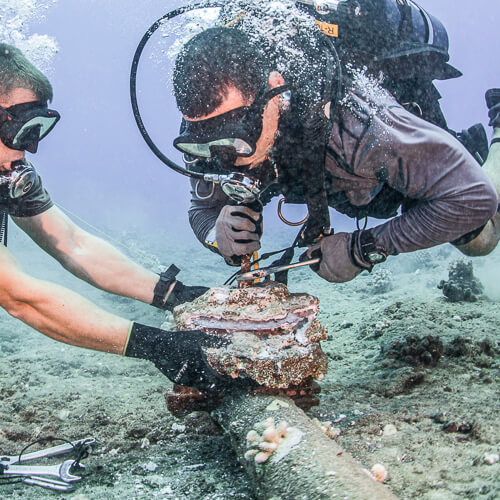US is winning the Pacific cable wars
The US may be struggling to persuade the world to ban Huawei gear from 5G networks, but it's a clear winner in the Pacific subsea cable wars.

The US may be struggling to persuade the world to ban Huawei from 5G, but it's a clear winner in the Pacific cable wars.
Last week Washington won yet another round, forcing the suspension of the East Micronesia Cable because of the involvement of Chinese vendor HMN Technologies.
The 2,000km cable is intended to link Micronesia in the west Pacific with the island states of Kiribati and Nauru.
Figure 1:  Fix it up: It's not the US Navy (above) that has their hands on undersea cables – the country is winning the undersea war with China.
Fix it up: It's not the US Navy (above) that has their hands on undersea cables – the country is winning the undersea war with China.
(Source: US Navy Official Page on Flickr, CC2.0)
But the project, backed by the World Bank and Asian Development Bank, has stalled after some of the states, prompted by the US, raised security concerns over the role of HMN, formerly the Huawei subsea cable unit.
Insecure line
The cable's planned connection to the HANTRU-1 cable linking Guam and US military test sites in the Kwajalein atoll further heightened security fears.
HMN, now majority-owned by the Hengtong Group, submitted a bid that was 20% below rivals Alcatel Submarine Networks (ASN) and Japan's NEC, Reuters reported.
Because there was no way to remove HMN from the bidding, the $73 million project is now on hold. The World Bank has said it is working with the island state governments to try to revive it.
It's the latest in a series of setbacks for China as the US, Japan and Australia have moved to sideline Chinese players from the Pacific cable networks.
Last year Beijing lost in the early maneuvering around the huge Humboldt cable that will connect continental South America to Asia.
The Chile government rejected China's plan to build a system that landed in Shanghai in favor of a more cost-effective Japanese proposal to link across the South Pacific to Australia, which has multiple routes into southeast and northeast Asia.
Want to know more about optical? Check out our dedicated optical channel here on Light Reading.
The $600 million project, backed by the Chile and Brazil governments, has not yet been put to tender. Two US consultancies were appointed last week to help find partners for the project.
Three years ago the Australian government dumped Huawei from a contract to build a cable linking the Solomon Islands to Sydney.
A fresh contract was issued to ASN to install the 4,700km Coral Sea Cable System, which was completed in December 2019 at an estimated $93 million cost.
In January, the Japan Bank for International Cooperation (JBIC) funded NEC to build a short bridging cable from Palau to the SEA-US trans-Pacific system, backed by the US and Australian governments.
Related posts:
— Robert Clark, contributing editor, special to Light Reading
Read more about:
AsiaAbout the Author(s)
You May Also Like




_International_Software_Products.jpeg?width=300&auto=webp&quality=80&disable=upscale)







